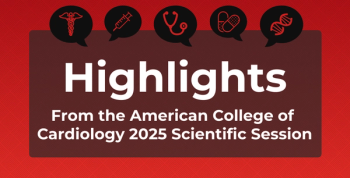
Early CGM Initiation, Remote Data Review Decreased HbA1C in Youth With T1D: Dr David Maahs
The pilot 4T study showed consistent hemoglobin A1C improvement in all children with type 1 diabetes (T1D) after 1 year, underscoring the importance of early continuous glucose monitoring (CGM) following diagnosis, explained David Maahs, MD, PhD, professor of pediatrics at Stanford University and division chief of pediatric endocrinology at Lucile Packard Children’s Hospital.
David Maahs, MD, PhD, professor of pediatrics at Stanford University and division chief of pediatric endocrinology at Lucile Packard Children’s Hospital, explains key results of the
Transcript
What were some of the main findings from the 4T study?
The 4T study is designed to try to accelerate the translation of these newly developed diabetes technologies, from research projects into clinical care. Several advances that we're able to make in this one is to start all children with type 1 diabetes on continuous glucose monitoring very early after diagnosis—on average about 7 to 10 days after they were diagnosed. So that saves them having to poke their finger. It also provides a safety net of knowing what's going on with your glucose values to help avoid low blood sugars or hypoglycemia. Also to try to avoid those higher blood glucose values as well.
Another aspect of that study then is that we're able to get that data and get it off the cloud and into what we call a population health database that was designed by our engineering colleagues here at Stanford, in collaboration with their certified diabetes care and education specialists or CDCES. And with that dashboard, we're able to then see that data and know how much time in range each person in the study has; if they're having low blood sugars, high blood sugars; if they aren't on their CGM, and often we've found out then that people were having challenges with insurance and getting their CGM covered, and so we're able to help with that. So it provides an opportunity in between clinic visits to be able to help patients and their families if they're having high sugars or low sugars, and to be able to help educate them and advise on insulin doses. The focus really is on the first year after diagnosis when families really need that extra support. And then we hope that with that extra education in that first year, that that carries forward into the second and third years of having diabetes.
Some of the main findings so far are that, in our pilot study, we saw over a half a percent reduction [of] hemoglobin A1C at 1 year, and about 63% of time in the target range of 70 to 180, while having very, very low amounts of hypoglycemia or glucoses less than 70. So those are really positive findings. A second finding that we reported just recently in the last couple of weeks in
In the past, there have been some studies, and Dr. Ananta Addala was the lead author
Newsletter
Stay ahead of policy, cost, and value—subscribe to AJMC for expert insights at the intersection of clinical care and health economics.












































